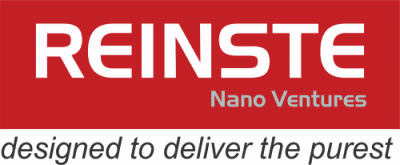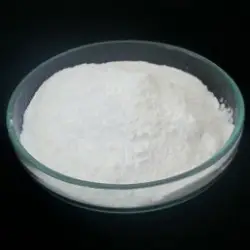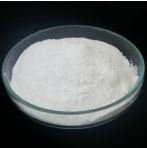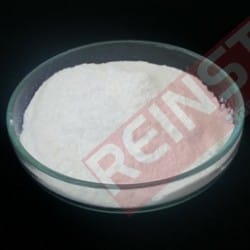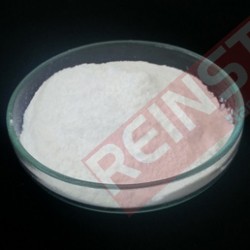Exploring the Benefits of Nano Aluminum Oxide in Energy Storage
The global demand for efficient and sustainable energy solutions is at an all-time high, driving relentless innovation in energy storage technologies. At the forefront of this revolution is Nano Aluminum Oxide (Al2O3), a material boasting exceptional properties that promise to redefine the landscape of batteries, supercapacitors, and various energy systems. From enhancing battery performance to improving thermal stability and safety, the benefits of Nano Aluminum Oxide are vast and transformative. This comprehensive article delves into the critical role of Nano Aluminum Oxide in energy storage, highlighting its unique characteristics, diverse applications, and the profound impact it has on advanced energy solutions.
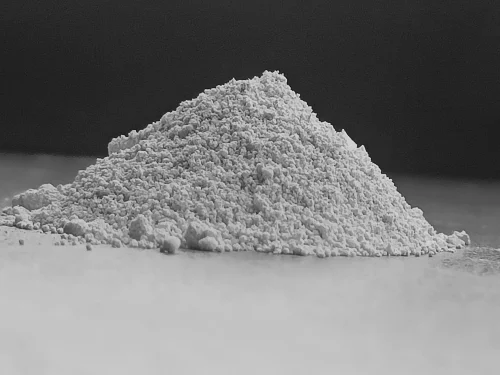
Understanding Nano Aluminum Oxide: A Fundamental Overview
Nano Aluminum Oxide, or nano-alumina, refers to aluminum oxide particles engineered to the nanoscale, typically ranging from 1 to 100 nanometers. At this diminutive size, Al2O3 exhibits dramatically altered physical and chemical properties compared to its bulk counterpart. These changes include increased surface area, enhanced reactivity, superior mechanical strength, and improved thermal and electrical insulation characteristics. These unique properties make Nano Aluminum Oxide an indispensable material for a wide array of advanced technologies, especially in the realm of energy storage.
The synthesis of Nano Aluminum Oxide involves various sophisticated methods, such as sol-gel, hydrothermal, chemical vapor deposition, and plasma techniques, each designed to achieve precise control over particle size, morphology, and purity. The ability to tailor these characteristics is crucial for optimizing its performance in specific energy applications, unlocking the full potential of Nano Aluminum Oxide in energy storage solutions.
Key Properties of Nano Aluminum Oxide for Energy Storage
The exceptional performance of Nano Aluminum Oxide in energy storage systems stems from a combination of its intrinsic properties, which are significantly amplified at the nanoscale:
- High Thermal Stability: Nano Aluminum Oxide possesses excellent thermal stability, resisting degradation at high temperatures. This property is crucial for battery safety, preventing thermal runaway, and extending the operational life of energy devices, making it a cornerstone for advanced materials.
- Electrical Insulation: As a strong electrical insulator, nano-alumina prevents short circuits within battery cells, especially when used as a coating or separator material. This enhances the overall safety and reliability of the energy storage system.
- High Dielectric Strength: Its high dielectric constant and breakdown strength enable Nano Aluminum Oxide to serve as an effective dielectric material in capacitors, contributing to higher energy density in supercapacitors and other electronic components.
- Mechanical Strength and Hardness: The superior mechanical strength of Nano Aluminum Oxide enhances the structural integrity of electrodes and separators, improving their durability and resistance to mechanical stress during charge-discharge cycles.
- Large Surface Area: The nanoscale dimensions result in an extremely high surface-to-volume ratio, which is beneficial for surface reactions, adsorption, and providing more active sites for electrochemical processes in batteries and catalysts.
- Chemical Inertness: Nano Aluminum Oxide is chemically stable and resistant to most acids and bases, ensuring its compatibility with various electrolyte systems and preventing unwanted side reactions within energy storage devices.
Recent Major Applications of Nano Aluminum Oxide in Energy Storage
The versatility and unique properties of Nano Aluminum Oxide have led to its widespread adoption across various cutting-edge energy storage applications:
Nano Aluminum Oxide in Lithium-Ion Batteries: Revolutionizing Performance and Safety
Lithium-ion batteries are the dominant technology for portable electronics and electric vehicles. However, challenges related to safety, lifespan, and energy density persist. Nano Aluminum Oxide offers compelling solutions:
- Electrode Coatings: Coating electrode materials (both anodes and cathodes) with a thin layer of Nano Aluminum Oxide dramatically improves their electrochemical stability and cyclability. For instance, Al2O3 coatings on NMC (Nickel-Manganese-Cobalt) cathodes suppress undesirable side reactions with the electrolyte, reduce capacity fading, and mitigate oxygen release at high voltages, significantly enhancing battery life and safety. Similarly, for silicon anodes, Nano Aluminum Oxide coatings can alleviate volume expansion issues, preventing cracking and maintaining structural integrity. This is a prime example of Nano Aluminum Oxide for improved battery performance.
- Separator Enhancement: Traditional polymer separators in lithium-ion batteries are prone to thermal shrinkage and short-circuiting at elevated temperatures. Incorporating Nano Aluminum Oxide into separator membranes creates ceramic-coated separators that exhibit superior thermal stability, mechanical strength, and electrolyte wettability. These enhanced separators prevent direct contact between electrodes even under abusive conditions, drastically reducing the risk of thermal runaway and fires. This vital role of Nano Aluminum Oxide in energy systems contributes directly to improved battery safety.
- Electrolyte Additives: Dispersing Nano Aluminum Oxide particles within the electrolyte can scavenge impurities, stabilize the solid-electrolyte interphase (SEI) layer, and improve ion transport kinetics. This leads to more efficient charge-discharge cycles and extended battery life.
Example: In a study, LiCoO2 cathodes coated with a 5 nm layer of Nano Aluminum Oxide showed a 20% increase in capacity retention after 100 cycles at high temperatures compared to uncoated cathodes, demonstrating the significant benefits of Nano Aluminum Oxide in lithium batteries.
Nano Aluminum Oxide in Supercapacitors: Boosting Power and Energy Density
Supercapacitors, known for their high power density and rapid charge/discharge capabilities, often fall short in energy density compared to batteries. Nano Aluminum Oxide helps bridge this gap:
- Electrode Materials: When combined with carbon-based materials or transition metal oxides, Nano Aluminum Oxide can act as a high-surface-area scaffold or additive, increasing the accessible surface area for ion adsorption and improving conductivity. This leads to higher specific capacitance and energy density in supercapacitors.
- Dielectric Layers: As an excellent dielectric material, thin films of Nano Aluminum Oxide can be used in micro-supercapacitors to create highly efficient dielectric layers, minimizing leakage currents and maximizing energy storage.
Example: Research has shown that graphene-based electrodes infused with Nano Aluminum Oxide nanoparticles can achieve a specific capacitance nearly double that of pure graphene electrodes, significantly boosting the energy storage capabilities of supercapacitors.
Solid-State Batteries and Nano Aluminum Oxide
Solid-state batteries are considered the next generation of energy storage due to their potential for higher energy density and inherent safety. Nano Aluminum Oxide plays a crucial role in developing solid electrolytes:
- Solid Electrolyte Additives: Incorporating Nano Aluminum Oxide into polymer or ceramic solid electrolytes can enhance their ionic conductivity by creating pathways for ion movement and suppressing dendrite growth, which is a major challenge in lithium metal batteries.
- Protective Layers: Nano-alumina can form robust protective layers on lithium metal anodes, preventing direct contact with the solid electrolyte and mitigating dendrite formation, thus improving safety and cycle life.
Nano Aluminum Oxide in Fuel Cells and Hydrogen Storage
Beyond batteries and supercapacitors, Nano Aluminum Oxide also finds utility in other energy systems:
- Catalyst Support: Its high surface area and thermal stability make it an ideal support material for catalysts in fuel cells, enhancing catalytic activity and durability for reactions like oxygen reduction and hydrogen oxidation.
- Hydrogen Storage: Nano Aluminum Oxide can be engineered to have specific pore structures for efficient hydrogen adsorption and desorption, contributing to safer and more effective hydrogen storage solutions.
Broader Benefits and Future Outlook of Nano Aluminum Oxide in Energy Systems
The integration of Nano Aluminum Oxide extends beyond specific device improvements, offering broader advantages for the energy sector:
- Enhanced Safety: By mitigating thermal runaway and short-circuit risks, Nano Aluminum Oxide significantly improves the safety profile of energy storage devices, which is paramount for consumer electronics, electric vehicles, and grid-scale applications.
- Extended Lifespan: Reduced degradation of electrodes and improved stability of internal components translate to longer operational lifespans for batteries and supercapacitors, reducing replacement costs and environmental impact. This highlights the role of Nano Aluminum Oxide for enhanced battery life.
- Higher Energy and Power Density: Through various mechanisms, Nano Aluminum Oxide contributes to packing more energy into smaller volumes and enabling faster charging/discharging rates, crucial for next-generation devices and vehicles.
- Cost-Effectiveness: While initially seen as a specialty material, advancements in synthesis techniques are making Nano Aluminum Oxide more accessible and cost-effective, paving the way for wider industrial adoption.
- Environmental Sustainability: Improved battery longevity and efficiency contribute to a reduced carbon footprint and more sustainable energy ecosystem.
The future of Nano Aluminum Oxide in energy storage is exceptionally promising. Ongoing research focuses on further optimizing particle morphology, surface chemistry, and integration methods to unlock even greater performance enhancements. We can anticipate novel applications of Nano Aluminum Oxide in electronics, including advanced sensors and flexible energy devices, further solidifying its position as a critical component in the evolution of energy technology.
As renewable energy sources like solar and wind become more prevalent, the demand for robust and efficient energy storage solutions will only intensify. Nano Aluminum Oxide, with its multifaceted benefits, is poised to play a central role in enabling the reliable integration of renewable energy into national grids and supporting the transition to a cleaner energy future. This underscores the significant contribution of Nano Aluminum Oxide in renewable energy and overall energy efficiency.
Ready to Explore Advanced Materials for Your Innovations?
Discover our range of high-quality Nano Aluminum Oxide products and other advanced materials designed to elevate your energy storage and electronic applications.
Frequently Asked Questions About Nano Aluminum Oxide in Energy Storage
Contact Us for Advanced Material Solutions
Have questions or need custom solutions for your energy storage projects? Reach out to our experts.
Related Products: Explore Our Aluminum Oxide Range
Discover more advanced materials that can revolutionize your applications.
-
Sale!

Aluminium Oxide – Nanopowder, gamma phase
Original price was: ₹6,984.00.₹4,233.00Current price is: ₹4,233.00. -
Sale!

Aluminium Oxide – Nanopowder, Theta Phase
Original price was: ₹6,249.00.₹3,787.00Current price is: ₹3,787.00. -
Sale!

Aluminium Oxide (Gamma)
Original price was: ₹33,525.00.₹20,318.00Current price is: ₹20,318.00. -
Sale!

Aluminium Oxide, (Alpha Phase)
Original price was: ₹8,087.00.₹4,901.00Current price is: ₹4,901.00. -

High Quality Nano Alumina Particles For Lithium Battery
-
Sale!

Nano Aluminium Oxide (Theta Phase)
Original price was: ₹16,762.00.₹10,159.00Current price is: ₹10,159.00. -
Sale!

Nano Aluminum Oxide
Original price was: ₹27,072.00.₹16,407.00Current price is: ₹16,407.00. -
Sale!

Nano Aluminum Oxide for Lithium Battery
Original price was: ₹14,248.00.₹8,635.00Current price is: ₹8,635.00. -

Nano aluminum oxide, 10-20nm
